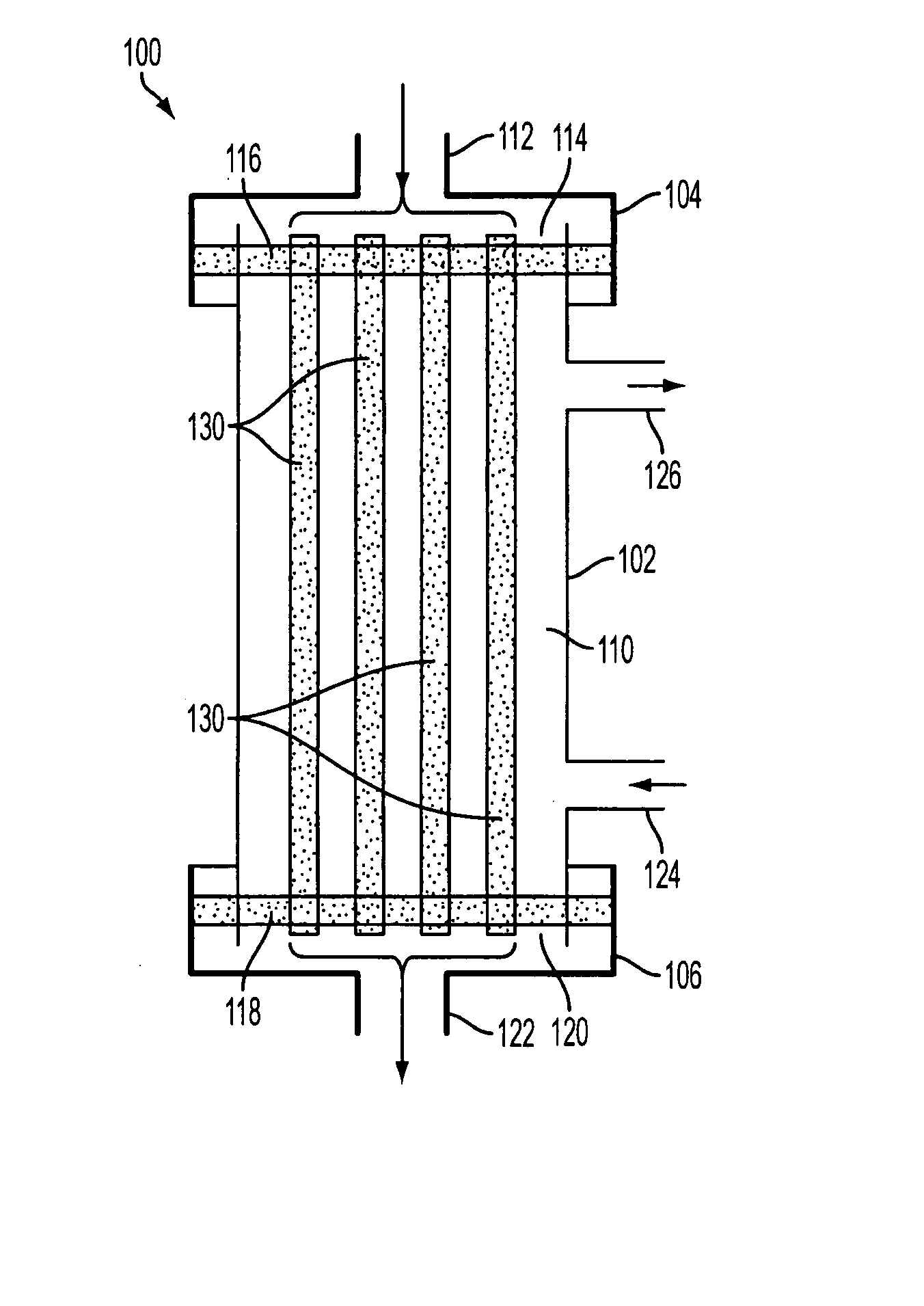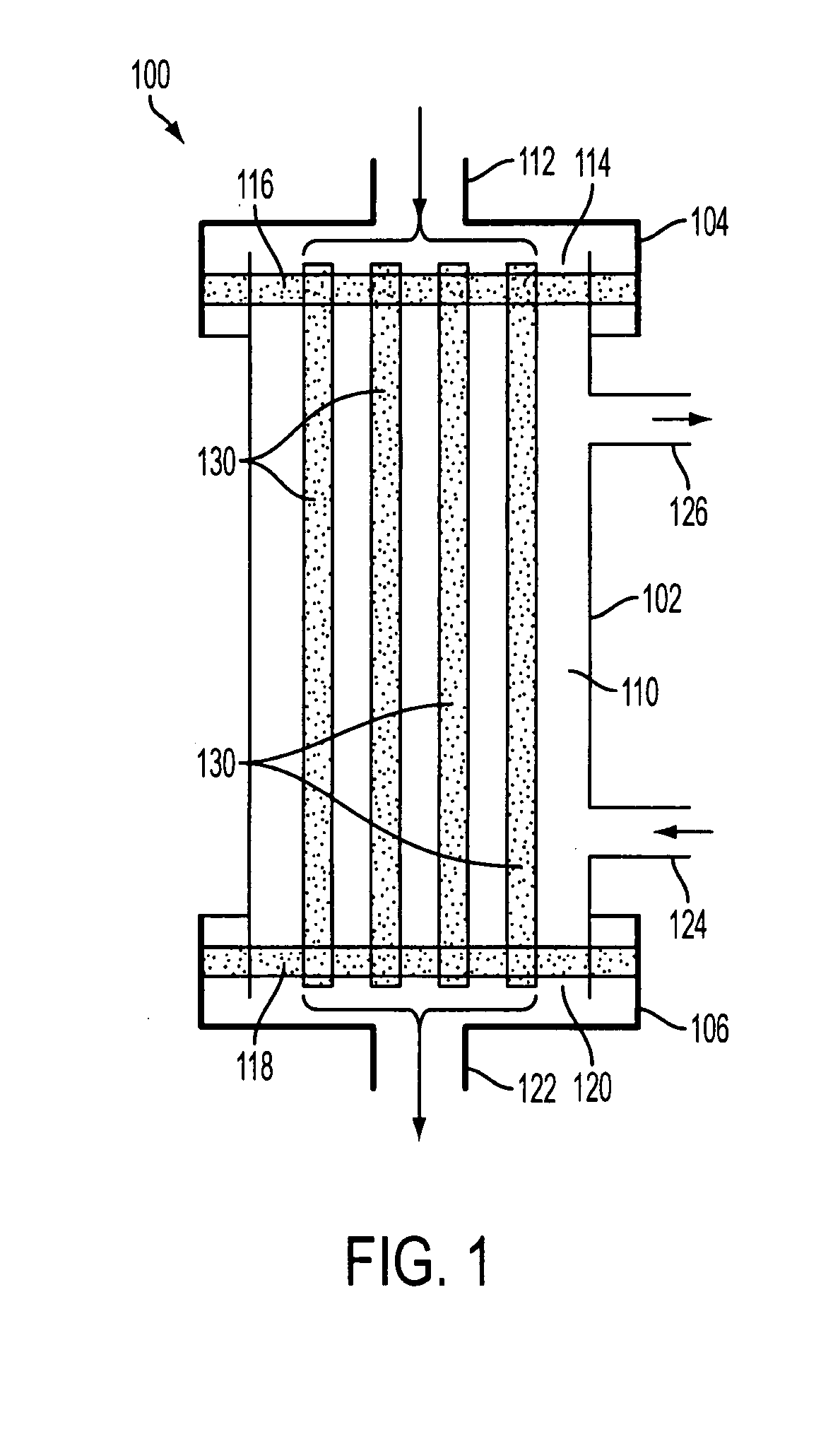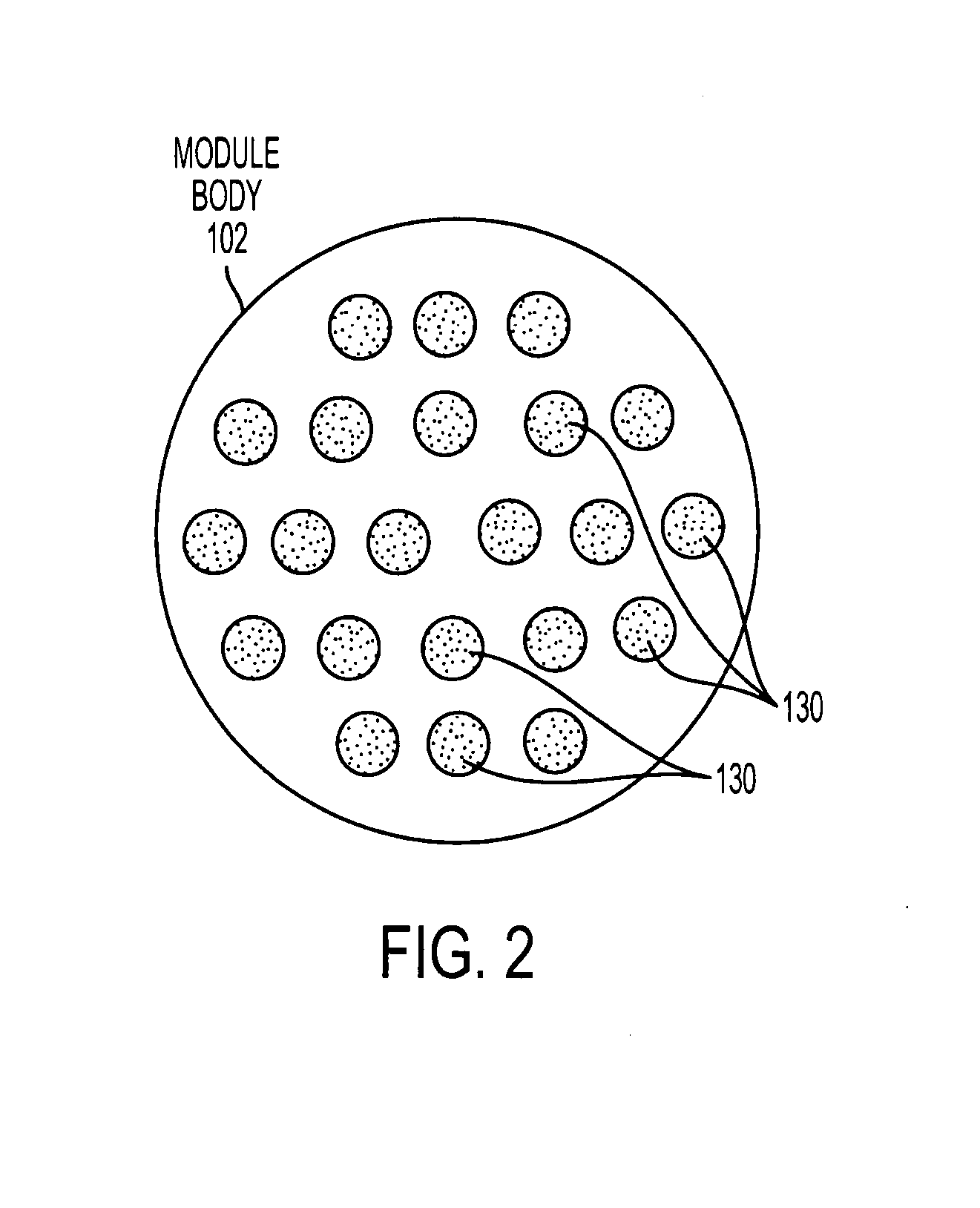Apparatus and Method for Filtering Fluids
a filter fluid and apparatus technology, applied in the field of filter fluid apparatus, can solve the problems of low efficiency of uremic solute removal, inability to adequately remove toxins of current diffusion-based therapies, undesirable loss of macromolecules, etc., and achieve the effect of increasing the effective membrane surface area available for mass exchange, facilitating perfusing the area, and uniform blood flow
- Summary
- Abstract
- Description
- Claims
- Application Information
AI Technical Summary
Benefits of technology
Problems solved by technology
Method used
Image
Examples
Embodiment Construction
[0073] Described herein is a filter module utilizing a nano-porous ceramic membrane that may be adapted for use in various applications including, but not limited to, enhanced hemodialysis performance, the removal (or separation) of cryoprotectant from biological materials, the separation of blood components, and controlling the concentration of cells in a biological fluid solution.
[0074] Filter Module.
[0075]FIG. 1 is an exemplary illustration of a filter module 100, according to an aspect of the invention. In one implementation, filter module 100 may comprise a housing that includes an inlet cap 104, module body 102, and outlet cap 106. Inlet cap 104 and outlet cap 106 may be integral with, or removable from, module body 102 as known and understood by those having skill in the art. Inlet cap 104, module body 102, and outlet cap 106 may each be formed from a rigid plastic material, or from other materials commonly used to fabricate similar devices. In some implementations, inlet c...
PUM
 Login to View More
Login to View More Abstract
Description
Claims
Application Information
 Login to View More
Login to View More - R&D
- Intellectual Property
- Life Sciences
- Materials
- Tech Scout
- Unparalleled Data Quality
- Higher Quality Content
- 60% Fewer Hallucinations
Browse by: Latest US Patents, China's latest patents, Technical Efficacy Thesaurus, Application Domain, Technology Topic, Popular Technical Reports.
© 2025 PatSnap. All rights reserved.Legal|Privacy policy|Modern Slavery Act Transparency Statement|Sitemap|About US| Contact US: help@patsnap.com



